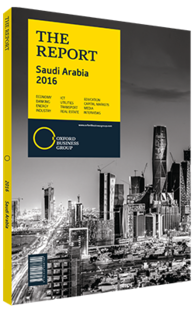New transport links in Saudi Arabia boost travel capacity in and around Makkah and Medina
Over the last five years several major public transport development programmes have been launched in the cities of Makkah and Medina. Now in the design, tendering and construction phases, these initiatives have the potential to transform the way residents and pilgrims travel to, from and within Islam’s most important sites. The SR62bn ($16.5bn) Makkah Public Transport Programme, launched in August 2012, comprises a rapid-transit bus network and four interconnected metro lines with a total of 88 stations. The project is expected to be completed by 2022.
Meanwhile, under the Medina Public Transport Programme, which was announced in November 2014, authorities are implementing plans to build a three-line metro system; a bus system involving rapid-transit, express and feeder routes; and a raft of road updates and improvements.
Connectivity between the cities of Makkah, Medina and Jeddah is also being improved through the SR50bn ($13.3bn) Haramain High-Speed Rail Project, which is expected to be completed in 2017. In addition, recent upgrades to Medina’s Prince Mohammad bin Abdulaziz International Airport (PMAI) and Jeddah’s King Abdulaziz International Airport (KAIA) are set to enhance international links.
Influx Of Visitors
The Makkah and Medina regions face a range of challenges when it comes to transport. Ensuring that visitors are able to move efficiently around and between both regions is a major concern and one that has been exacerbated by rising arrival numbers in recent years. Indeed, according to forecasts from the Makkah Mass Rail Transit Company (MMRTC), the region will attract some 26m pilgrims every year – more than double the current figure – by 2030. “We are under huge pressure to perform this project in fast track,” Abdullah Al Marshad, the MMRTC’s deputy CEO, told local media late in 2015. “There is an urgent need to do it fast, as there is [currently] no modern public transport in Makkah.”
The Makkah Public Transport Programme aims to correct this situation. The first phase of the project, which is expected to be completed by 2020, includes two metro lines connecting 22 stations and covering just over 45 km in total. In July 2015 the MMRTC named a Spanish-led consortium as the preferred bidder for phase one of the metro project. Headed by the Madrid-based firm Isolux Corsan, the consortium also includes Saudi Arabia’s Haif Company and Turkey’s Kolin. While bids for additional civil works on the first two metro lines, as well as systems and rolling stock, have also been proceeding quickly, as of early May 2016, MMRTC was waiting for Saudi Arabia’s Royal Court to issue final approvals for the deals.
The Medina Public Transport Programme, meanwhile, has also recorded progress of late. In mid-2015 the city signed an SR81.9m ($21.8m) contract with a consortium led by the French rail engineering and consulting group SYSTRA to draw up preliminary designs for the Medina Metro project.
Regional Effort
Launched in the mid-2000s, the Haramain High-Speed Rail Project will connect important sites in Makkah, Medina and Jeddah with 450 km of track, according to information provided by the Saudi Railways Organisation. Much of the construction work on the project, which began in 2009, had been completed by early 2016, and technical testing of the track and rolling stock had begun. Upon completion in 2017, it will provide travel at up to 300 km per hour to an estimated 3m passengers a year.
Regarding air travel, a comprehensive renovation programme was launched at Jeddah’s KAIA in 2006. The first phase of the project, which includes new terminals and facilities, is expected to open its doors in 2017, boosting the airport’s capacity from 17m to around 30m passengers per annum. At Medina’s PMAI, meanwhile, a privately operated terminal opened for business in July 2015, doubling the airport’s annual capacity from 4m to 8m passengers.
You have reached the limit of premium articles you can view for free.
Choose from the options below to purchase print or digital editions of our Reports. You can also purchase a website subscription giving you unlimited access to all of our Reports online for 12 months.
If you have already purchased this Report or have a website subscription, please login to continue.

